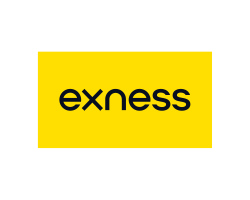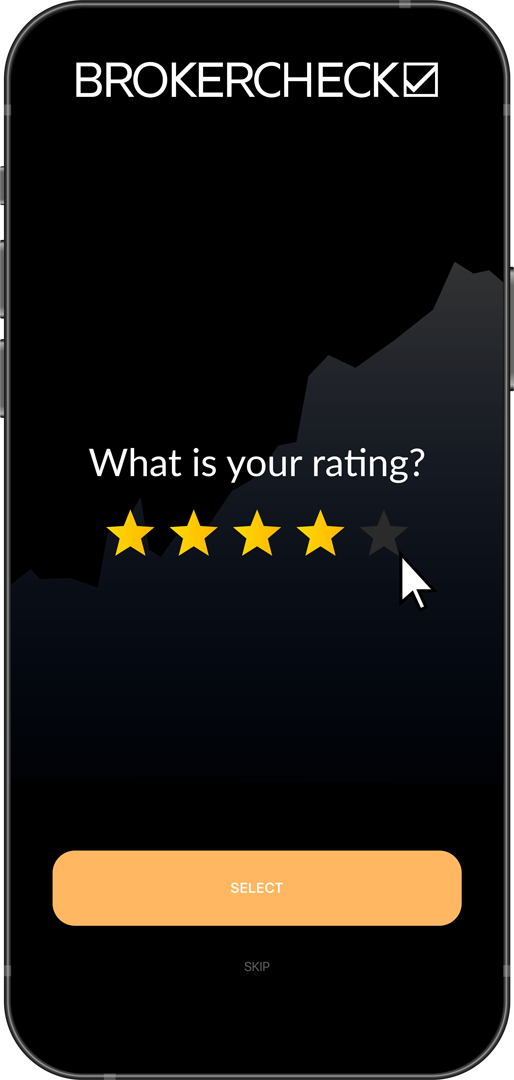1. Overview of the Envelope Indicator
The Envelope Indicator, a prominent tool in technical analysis, serves as a method to identify potential overbought and oversold conditions in a market. This indicator is widely utilized across various financial instruments, including stocks, commodities, and forex, providing traders and analysts with insights into market dynamics.

1.1. Definition and Basic Concept
The Envelope Indicator consists of two moving averages that form a band or ‘envelope’ around a price chart. These moving averages are typically set at a fixed percentage above and below a central moving average line. The basic idea is to capture the natural ebb and flow of market prices, assuming that prices tend to oscillate within a predictable range over time.
1.2. Purpose and Usage
The primary purpose of the Envelope Indicator is to identify extreme price movements. When the price of an asset reaches or crosses the upper envelope, it may indicate an overbought condition, suggesting that the price might soon decline. Conversely, if the price touches or dips below the lower envelope, it could signal an oversold condition, hinting at a potential price increase.
1.3. Historical Context and Development
Developed from the concept of moving averages, the Envelope Indicator has been a part of technical analysis for decades. Its simplicity and adaptability have made it a staple among traders who seek to understand market trends and potential reversal points.
1.4. Popularity in Different Markets
While the Envelope Indicator is versatile enough to be applied in various markets, its effectiveness can vary. In highly volatile markets, such as cryptocurrency, the indicator might generate frequent false signals. In contrast, it tends to perform better in markets with more stable and consistent trends.
1.5. Advantages
- Simplicity: Easy to understand and implement, making it suitable for both novice and experienced traders.
- Customizability: Traders can adjust the percentage width of the envelopes and the type of moving average used, allowing for flexibility in different market conditions.
- Versatility: Applicable to various time frames and financial instruments.
1.6. Limitations
- Lagging Nature: As a derivative of moving averages, the Envelope Indicator is inherently lagging, meaning it reacts to price movements rather than predicts them.
- False Signals: In highly volatile markets, the indicator may produce false signals, leading to potential misinterpretation of market conditions.
- Dependency on Settings: The effectiveness largely depends on the chosen settings, which may require frequent adjustments based on market volatility and the asset being traded.
| Aspect | Details |
|---|---|
| Type of Indicator | Trend Following, Band |
| Common Usage | Identifying Overbought/Oversold Conditions, Trend Analysis |
| Markets Applicable | Stocks, Forex, Commodities, Cryptocurrencies |
| Timeframe Applicable | All (with adjusted settings) |
| Key Advantages | Simplicity, Customizability, Versatility |
| Key Limitations | Lagging Nature, Risk of False Signals, Setting Dependency |
2. Calculation Process of the Envelope Indicator
Understanding the calculation process is crucial for effectively using the Envelope Indicator. This section outlines the steps involved in calculating the envelopes and setting the parameters.
2.1. Selecting the Base Moving Average
- Choice of Moving Average: The first step involves selecting a moving average type as the basis of the envelopes. Common choices include Simple Moving Average (SMA), Exponential Moving Average (EMA), or Weighted Moving Average (WMA).
- Determining the Period: The period of the moving average (e.g., 20-day, 50-day, 100-day) is selected based on the desired sensitivity and the timeframe of trading.
2.2. Setting the Percentage Width
- Percentage Determination: The envelopes are typically set at a fixed percentage above and below the chosen moving average. This percentage can vary based on market volatility and the specific asset.
- Adjustment for Market Conditions: In highly volatile markets, a wider percentage may be necessary to avoid frequent false signals, while in less volatile markets, a narrower percentage can be used.
2.3. Calculating the Upper and Lower Envelopes
- Upper Envelope: This is calculated by adding the chosen percentage to the moving average. For example, if the 20-day SMA is 100 and the set percentage is 5%, the upper envelope would be 105 (100 + 5% of 100).
- Lower Envelope: Similarly, this is calculated by subtracting the chosen percentage from the moving average. Using the same example, the lower envelope would be 95 (100 – 5% of 100).
2.4. Plotting on a Chart
The final step involves plotting the moving average and the two envelopes on the price chart of the asset being analyzed. This visual representation helps in identifying potential buy or sell signals.
2.5. Adjustments and Optimization
- Timeframe Specific Adjustments: For different trading timeframes, the period of the moving average and the percentage width of the envelopes might need optimization.
- Continuous Monitoring and Tweaking: Regular review and adjustment of parameters are recommended to align with changing market conditions.
| Calculation Step | Description |
|---|---|
| Base Moving Average | Selection of SMA, EMA, or WMA with a specific period |
| Percentage Width | Setting a fixed percentage above and below the moving average |
| Upper Envelope | Calculated by adding the set percentage to the moving average |
| Lower Envelope | Calculated by subtracting the set percentage from the moving average |
| Chart Plotting | Visual representation on the price chart |
| Adjustments | Periodic tweaking based on market conditions and trading timeframe |
3. Optimal Values for Setup in Different Timeframes
The effectiveness of the Envelope Indicator greatly depends on the appropriate selection of its parameters, which can vary across different timeframes. This section explores the optimal settings for various trading scenarios.
3.1. Short-Term Trading (Intraday)
- Moving Average Period: A shorter period, like 10-20 days, is often preferred for intraday trading to capture recent price movements.
- Percentage Width: A narrower band, around 1-2%, is typically used to respond to quick market movements.
- Example: For a highly liquid stock, using a 15-day EMA with a 1.5% envelope width can be effective for intraday trading.
3.2. Medium-Term Trading (Swing Trading)
- Moving Average Period: A medium-term period, such as 20-50 days, balances responsiveness with trend stability.
- Percentage Width: A moderate band width, approximately 2-5%, helps in identifying more significant trend reversals.
- Example: For swing trading in forex, a 30-day SMA with a 3% envelope could provide reliable signals.
3.3. Long-Term Trading (Position Trading)
- Moving Average Period: A longer period, like 50-200 days, is ideal for capturing broader market trends.
- Percentage Width: A wider band, around 5-10%, is necessary to accommodate for long-term volatility.
- Example: In commodities trading, using a 100-day SMA with an 8% envelope might be suitable for long-term analysis.
3.4. Adjusting to Market Volatility
- High Volatility: In volatile markets, widening the envelope can reduce the likelihood of false signals.
- Low Volatility: In stable markets, a narrower envelope can provide more sensitive trading signals.
3.5. Asset Specific Considerations
Different assets may require different settings due to their unique price behaviors and volatility patterns. Continuous testing and adjustment are crucial.

| Timeframe | Moving Average Period | Percentage Width | Example Usage |
|---|---|---|---|
| Short-Term | 10-20 days | 1-2% | Intraday trading in highly liquid stocks |
| Medium-Term | 20-50 days | 2-5% | Swing trading in forex markets |
| Long-Term | 50-200 days | 5-10% | Position trading in commodities |
| Market Volatility | Adjusted as needed | Adjusted as needed | Depending on current market conditions |
4. Interpretation of the Envelope Indicator
Interpreting the Envelope Indicator involves understanding the signals it provides and how they relate to potential market actions. This section covers the key aspects of interpreting this indicator.
4.1. Identifying Overbought and Oversold Conditions
- Overbought Signal: When the price touches or crosses the upper envelope, it suggests that the asset may be overbought. Traders might consider this a signal to sell or avoid buying.
- Oversold Signal: Conversely, if the price hits or falls below the lower envelope, it indicates a potential oversold condition. This could be a signal to buy or cover shorts.
4.2. Trend Reversals
- Price Exiting the Envelopes: A reversal in price direction upon reaching or crossing an envelope can signal a potential trend reversal.
- Confirmation with Volume: Verifying these signals with high trading volume can increase their reliability.
4.3. Consolidation and Breakouts
- Price Within the Envelopes: When the price remains within the envelopes, it often indicates a consolidation phase.
- Envelope Breakouts: A sustained move outside the envelopes may signal a breakout and the beginning of a new trend.
4.4. False Signals and Filtering
- High Volatility Situations: In highly volatile markets, the envelopes may give false signals. It’s crucial to combine the Envelope Indicator with other analysis tools for validation.
- Filtering with Additional Indicators: Using oscillators like RSI or MACD can help filter false signals by providing additional market context.
4.5. Contextual Interpretation
- Market Conditions: The interpretation of signals should always consider the broader market context and economic indicators.
- Asset Specificity: Different assets may exhibit unique behaviors with respect to the envelopes, requiring tailored interpretation strategies.
| Interpretation Aspect | Key Points |
|---|---|
| Overbought/Oversold | Upper/Lower envelope breaches indicating potential sell/buy opportunities |
| Trend Reversals | Price reversing direction at envelope edges |
| Consolidation/Breakouts | Price within envelopes indicates consolidation; outside suggests breakout |
| False Signals | Common in volatile markets; require confirmation with other tools |
| Contextual Analysis | Consideration of broader market conditions and asset specificity |
5. Combining the Envelope Indicator with Other Indicators
Integrating the Envelope Indicator with other technical analysis tools can provide a more robust and comprehensive market analysis. This section explores effective combinations and strategies.
5.1. Using Oscillators for Confirmation
- Relative Strength Index (RSI): Combining RSI with the Envelope Indicator helps in confirming overbought or oversold conditions. For instance, an overbought signal from the Envelope Indicator accompanied by an RSI above 70 could strengthen the sell signal.
- Moving Average Convergence Divergence (MACD): MACD can be used to confirm trend reversals indicated by the Envelope Indicator. A bearish crossover in MACD aligning with an upper envelope breach might indicate a stronger sell signal.
5.2. Trend Confirmation with Moving Averages
- Simple Moving Averages (SMA): Additional SMAs with different periods can help confirm the trend direction suggested by the Envelope Indicator. For example, a price above a longer-term SMA (like 100-day) might confirm an upward trend.
- Exponential Moving Averages (EMA): EMAs react more quickly to price changes and can be used to identify short-term trend reversals within the broader trend indicated by the envelopes.
5.3. Volume as a Validation Tool
- Volume Indicators: Incorporating volume indicators can validate breakout signals. A high trading volume accompanying an envelope breakout suggests a strong move and increases the reliability of the signal.
- On-Balance Volume (OBV): OBV can be particularly useful in confirming the strength of trends and breakouts signaled by the Envelope Indicator.
5.4. Support and Resistance Levels
- Fibonacci Retracements: These can be used to identify potential support and resistance levels. An envelope breach near a key Fibonacci level may offer a significant trading signal.
- Pivot Points: Combining pivot points with envelope signals can provide additional insights into potential reversal points.
5.5. Customizing Combinations Based on Trading Style
- Short-Term Traders: May prefer combining fast-reacting indicators like EMAs or Stochastics with the Envelope Indicator for quick decision-making.
- Long-Term Traders: Might find it beneficial to use slower indicators like long-term SMAs or ADX with the Envelope Indicator for trend confirmation.
| Combining Aspect | Indicator Examples | Purpose & Benefit |
|---|---|---|
| Oscillators | RSI, MACD | Confirm overbought/oversold conditions, trend reversals |
| Moving Averages | SMA, EMA | Confirm trend direction and strength |
| Volume Indicators | Volume, OBV | Validate breakouts and trend strength |
| Support/Resistance | Fibonacci, Pivot Points | Identify significant levels for potential reversals |
| Customization | Based on Trading Style | Tailor combinations for effective strategy implementation |
6. Risk Management with the Envelope Indicator
Effective risk management is crucial when using any technical indicator, including the Envelope Indicator. This section provides insights into managing risks while employing this tool in trading strategies.
6.1. Setting Stop-Loss and Take-Profit Levels
- Stop-Loss Orders: Placing stop-loss orders slightly outside the envelope can limit potential losses. For instance, in a long position, setting a stop-loss just below the lower envelope can protect against sudden downtrends.
- Take-Profit Orders: Similarly, take-profit orders can be set near the opposite envelope to capture potential price reversals and secure gains.
6.2. Position Sizing
- Conservative Position Sizing: Adjusting the size of trades based on the strength of the envelope signals can help manage risk. Weaker signals might warrant smaller position sizes.
- Diversification: Spreading investments across different assets can reduce the risk associated with reliance on signals from a single market or asset.
6.3. Using Trailing Stops
- Dynamic Adjustment: Trailing stops can be set to adjust automatically with the moving envelope levels, helping to protect gains while allowing room for profitable positions to run.
- Percentage-Based Trailing Stops: Setting trailing stops based on a percentage of the current price can align with the envelope’s percentage width, maintaining consistency in risk management.
6.4. Combining with Other Risk Management Tools
- Volatility Indicators: Tools like Average True Range (ATR) can help in setting more informed stop-loss and take-profit levels by accounting for the asset’s volatility.
- Risk/Reward Ratios: Calculating and adhering to a predetermined risk/reward ratio for each trade can ensure disciplined trading decisions.
6.5. Continuous Monitoring and Adjustment
- Regular Review of Settings: The parameters of the Envelope Indicator should be reviewed and adjusted regularly to align with changing market conditions.
- Market Analysis: Keeping abreast of broader market trends and economic indicators can provide additional context for interpreting envelope signals and managing risks.
| Risk Management Aspect | Strategy Description |
|---|---|
| Stop-Loss/Take-Profit | Setting orders outside envelopes for loss protection and gain realization |
| Position Sizing | Adjusting trade size based on signal strength; diversifying portfolio |
| Trailing Stops | Using dynamic or percentage-based stops for profit protection |
| Other Risk Tools | Incorporating volatility indicators and risk/reward calculations |
| Monitoring/Adjustment | Regularly updating settings and staying informed on market conditions |














